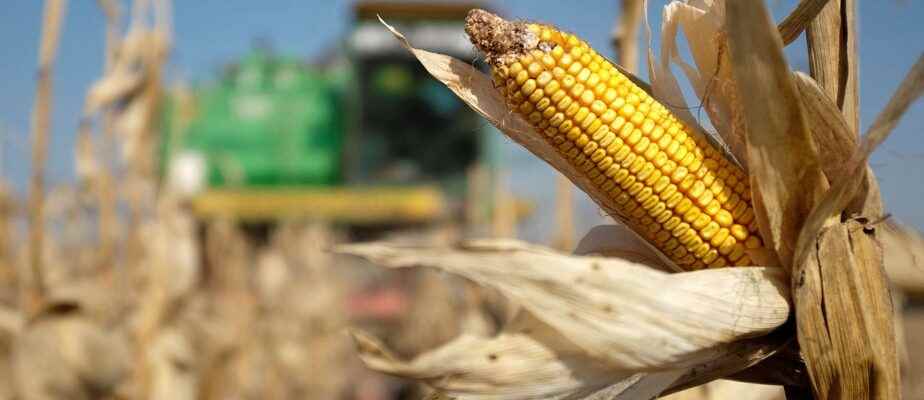(New York) Corn production in Ukraine will fall by 53% during the current campaign, estimates the United States Department of Agriculture (USDA), which also sees the quantity of wheat produced by the country at war falling by more than ‘a third.
Posted yesterday at 2:17 p.m.
At the same time, wheat production should increase by more than 6% in Russia, which would thus consolidate its position as the world’s leading exporter ahead of the European Union, with 19% of volumes traded against 16.5% the previous year.
“The net trend” of this monthly report called Wasde, “is always tensions on the cereals market and in particular wheat”, reacted Gautier Le Molgat, of the Agritel cabinet.
The USDA thus sees world stocks reaching the end of the campaign which is ending (the wheat year starts on the 1er June in the United States) down 3.9%, and sees them still fall back by 4.5% at the end of the next season.
In addition to Ukraine, the US Department of Agriculture expects a deceleration in production in Australia and Morocco, which will only be partially offset by a very strong increase in volumes in Canada (+52%), which follows a vintage marked by drought, as well as an improvement in Russia and the United States.
Even if the forecasts clearly indicate a global contraction, the USDA maintains “an optimistic view of production for the new crop”, according to Gautier Le Molgat.
“They are”, for example, “started with very high figures in India, when we are talking about a record drought at the moment”, he specifies. “It’s very optimistic. »
“We can also cast doubts,” he says, on the USDA’s announced increase in production in the United States, where the department’s latest survey, released on Monday, reported that 39% of wheat crops d he winter was in “bad” or “very bad” condition, double that of last year.
After the publication, the price of wheat variety SRW (Soft Red Winter Wheat), the benchmark on the Chicago Stock Exchange, jumped to its highest level in more than two months.
On the corn side, the USDA also sees production falling slightly (-2.8%), as well as world stocks at the end of the period (-1.3%), a movement linked in particular to the decrease announced in the United States. United, spaces dedicated to the benefit of soybeans.
The prices of yellow grain also rose in temperature on Thursday, approaching again the peak of almost ten years reached at the end of April.
Among the three major agricultural commodities, soybeans “is probably the one whose figures (published Thursday) are the least favorable” to prices, commented Michael Zuzolo, president of Global Commodity Analytics and Consulting.
The USDA is thus forecasting a sharp rise in production (+12%) and end-of-period stocks (+16%), which should return to their level at the end of the 2020/21 campaign.
“Production and stocks could even be higher,” the analyst said, “if the weather in the US and Europe favors oilseeds over corn.”
